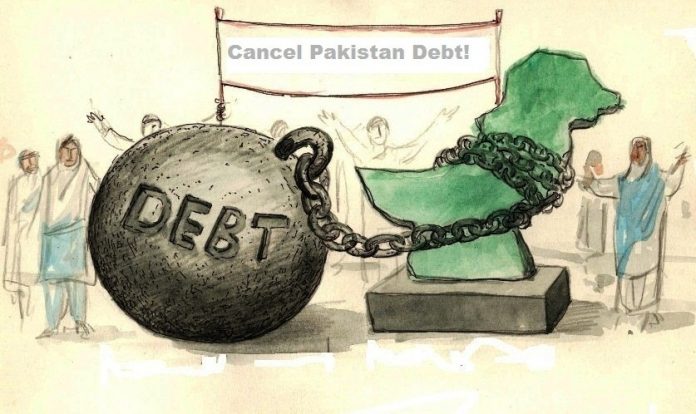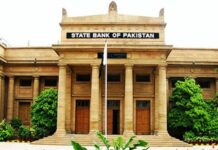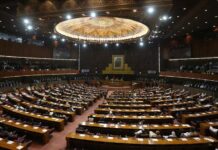
ISLAMABAD: The State Bank of Pakistan’s (SBP) newest central government debt bulletin for first ten months (July-April) of the financial year 2017-18 revealed federal government debt rose to Rs23.6 trillion, an increase of Rs2.84 trillion.
This is attributable to an increasing budget deficit and policy to provide inordinate benefits to commercial banks by placing deposits with them at very low rates reported Express Tribune.
The statistics reveal a staggering amount of debt has been added than what was needed, and the federal government kept on obtaining more debt for meeting its expenses instead of using the deposits placed with commercial banks.
According to the central bank’s data, federal government’s debt swelled to Rs23.6 trillion at end of April FY18.
A net rise of 13.7 percent was recorded during the July-April of FY18, touching Rs2.838 trillion. For nine months (July-March), the finance ministry reported a budget deficit of Rs1.481 trillion, equivalent to 4.3 percent of gross domestic product (GDP).
And an addition of Rs2.838 trillion to the federal government’s debt figure equates to 8.3 percent of GDP.
The debt rose due to rupee devaluation and keeping government deposits with commercial banks, which was a wrong policy and was aimed at fattening the purse of banks.
The profit rates on these deposits received from commercial banks were much lower compared to the cost it paid on obtaining debt, according to sources in the finance ministry.
Overall domestic debt of the federal government rose to around Rs16.2 trillion, an addition of Rs1.4 trillion or 9.2 percent in first ten months of FY18.
Domestic debt formation faced a major change, which subjected the finance ministry to refinancing risks.
Short-term public debt share surged by a staggering 54.4 percent or Rs8.82 trillion by end of April 2018.
During June 2017, the short-term domestic debt was recorded at 44 percent or Rs6.6 trillion. Short-term debt grew 34.7 percent or Rs2.27 trillion during first ten months of FY18.
The increase in short-term debt was attributable to the rising reliance on borrowing via sale of market treasury bills (MTBs).
Total borrowing via MTBs for the federal government rose to Rs5.2 trillion, an increase of Rs1.05 trillion or 25.7 percent.
Also, MTB’s issued to refill cash increased to Rs3.7 trillion, a net addition of Rs1.221 trillion in first ten months of FY18.
Ironically, Pakistan’s long-term debt fell 11 percent to Rs7.4 trillion. The share of long-term debt in overall domestic debt at end of June last year stood at 56 percent, which decreased to 45.5 percent by April this year.
A decrease was recorded in the share of bonds issued by the federal government, touching Rs3.74 trillion from Rs4.8 trillion. This net fall of Rs1.03 trillion or 21.6 percent in bond holdings reveals banks unwillingness to place funds for longer periods.
And the debt obtained via the sale of prize bonds rose from Rs747 billion to Rs826 billion by end of April FY18.
An increase of one-fourth was posted in external debt, touching Rs7.4 trillion during July-April FY18.























